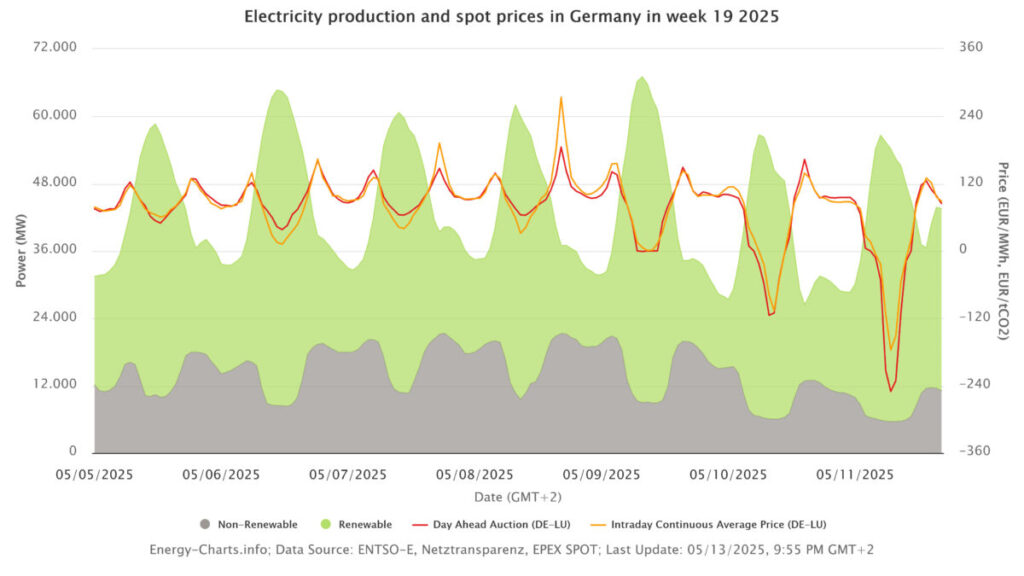On 11 May, the day prize peaked at minus € 250.32 per megawatt hours.
Source: Energy rights/Fraunhofer Isee
On Sunday 11 May, electricity prices for customers with dynamic rates in Germany fell for the first time this year in net negative territory after deduction of tasks and taxes, which was approximately 18 cents per kilowatt hour in Germany.
The net end user prices at Electricity Provider Tibber reached their lowest level between 1 p.m. and 2 p.m., with minus 8.6 cents per kilowatt hour in the Cologne region. Depending on the level of grid costs, the net end user price fluctuates throughout Germany, ranging from 4.9 to 11.6 cents per kilowatt hour, depending on the region. Tibber also registered the net end user prices of approximately 12 cents per kilowatt hour in areas with low grid costs.
The so-called light breeze-the equivalent of the dark Doldrums in which photovoltaic systems and wind turbines work at full speed at the same time led to extremely low prices on electricity exchange during the day on Sunday. Moreover, the demand for electricity at the weekend is generally lower than during the week. According to energy maps, the exchange of electricity prices fell in a negative area from Sunday 9 a.m. and remained there until 5 p.m. The lowest level was reached between 1 p.m. and 2 p.m. at minus € 250.32 per megawatt hour (or minus 25.03 cents per kilowatt hour). Even in the price hours before and after, however, the exchange of electricity price was still so low that end customers with dynamic electricity rates received a net payment when they consumed electricity, such as when charging their photovoltaic home storage system or electric car.
On Sunday, however, also showed how quickly things can change in the other direction. The prices at Tibber’s dynamic rate were 36 cents per kilowatt hour between 8 p.m. and 9 p.m., the highest level of the day.
Regarding the net negative prices between noon and 3 p.m., Tibber Deutschland director Merlin Lauenburg noted: “It seems that this summer will again break all records for negative electricity prices.” The new federal government must therefore finally continue with the Smart Meter rollout so that the general public can finally benefit financially from the energy transition, he added.
Last year the prices for the electricity exchange were 457 hours negative, an increase of 50% compared to 2023. It is expected that there will be many negative price hours again this year, because the necessary flexibility in the electricity market is currently missing.
This content is protected by copyright and may not be reused. If you want to work with us and reuse part of our content, please contact: editors@pv-magazine.com.
Popular content


